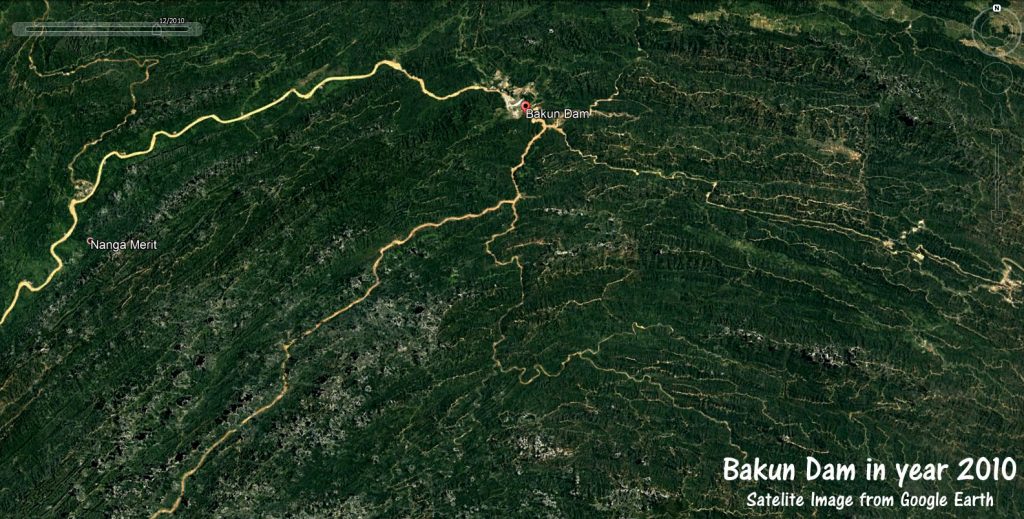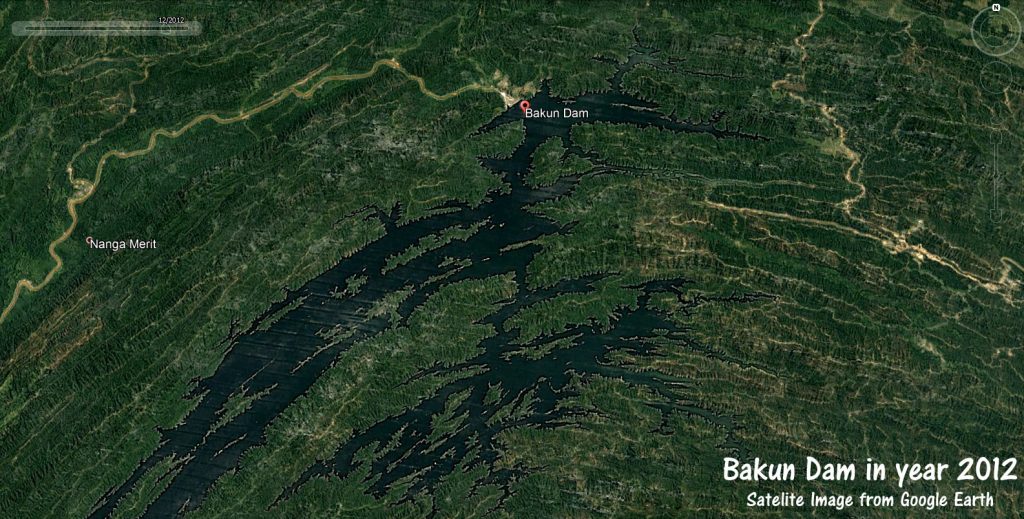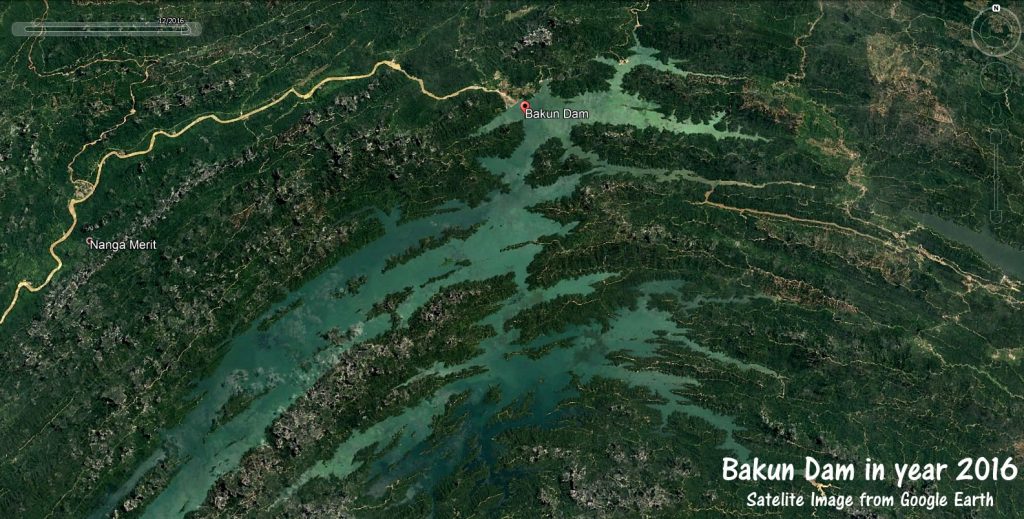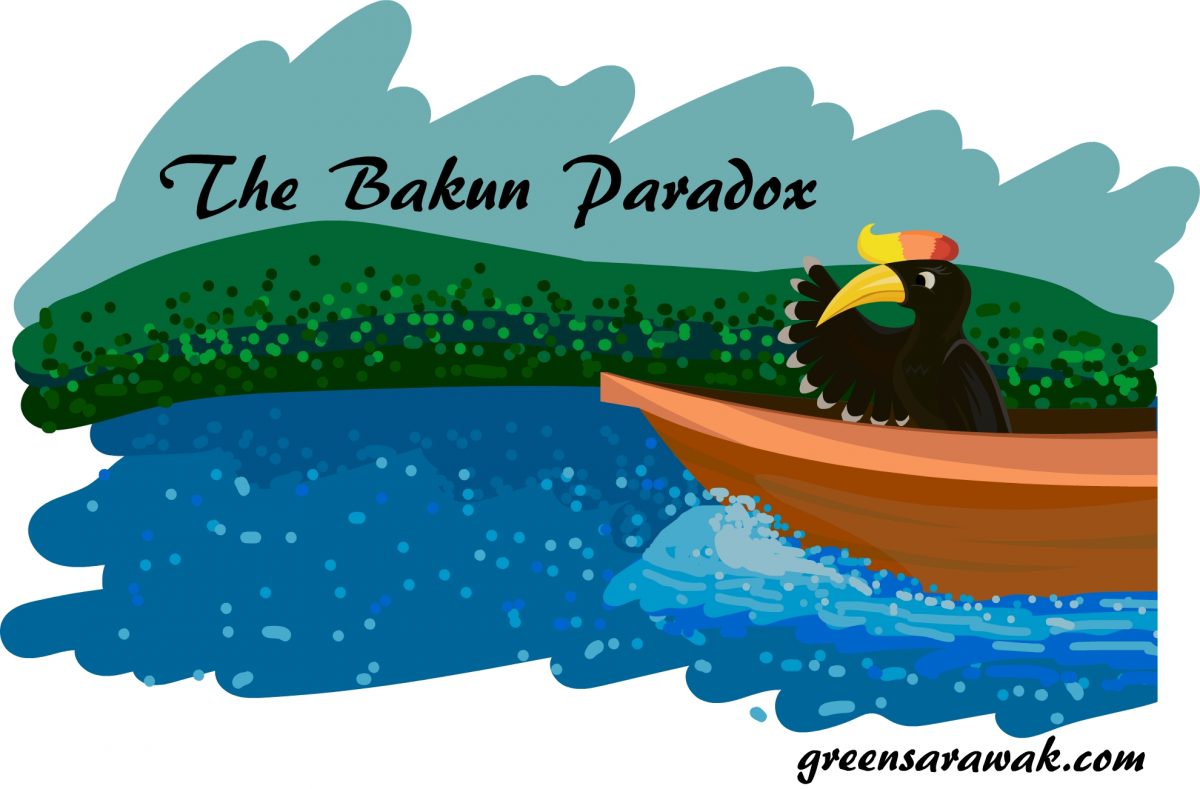Dams are once consider more environment friendly than other modalities of energy generations. In schools we learn that Hydroelectric Power Plants are one of the best renewable energy that can generate electricity to power up cities and nation.
Well, all of above is true, but we did not make a fine print clear to everyone to understand that it is not without the impact to the environment.
Sarawak is being proud of being part of the oldest rainforest in the world that dates back 130millions years old. Our Rainforest have vast diversity of plants and animals of tropical origin. Tourist from far and near come just to visit our wonderful diversity and natural heritage.
Lets see the Case of Bakun Dam of Sarawak.
Bakun Dam of Sarawak
The Bakun Dam is an embankment dam (bank or hill like structure build across the river to hold back water reservoir at one end) , which located on the Balui River (tributary of the majestic Rajang River).
It had the second tallest concrete-faced rockfill dam in the world with height of 205m and length of 750m.
Artificial formed reservoir – Bakun Lake will be the biggest lake in Malaysia by storage volume and surface area. It was estimated to have 43,800,000,000 m3 of storage capacity.
The great vision to power up the whole Sarawak with excess power to be shared with Peninsular Malaysia, Brunei and Kalimantan. It is planned to generate 2,400 megawatts (MW) of electricity once completed. Bakun Power Station will be the largest hydroelectric dam in Malaysia.
It was an envisioned project that had been survey since the 1960s and faced many obstacles, and it was not untill 1996 the building process begins. During the building it also faced many challenges financially and politically. Many Social and Environmental concern had raised since its commencement.
The Impact of Bakun Dam
The Impact of the Dam includes :
- The massive reservoir that holds behind the dam will put nearly 700 km2 of land underwater (equivalent to the size of Singapore). This flood kills billions of native trees along the flood plains. What comes worse is the rotting trees release vast amount of green house gases and the damage of the forest (which acts as a carbon sink) is irreversible.
- 230 km2 virgin tropical rainforest that had to be cut down during the dam construction sending many concern about the unnecessary lost of precious natural resources.
- It involves relocation of more than 9,000 native residents (mainly Kayan/Kenyah) of the indigenous peoples who lived in the area to be flooded. Many was discontent with the relocation due to lack of hunting grounds and farming grounds in the new settlement.
- Sibu city which is just along the majestic Rajang River was always in fear of major flood that might cause if the dam collapsed. It have cause migration out of the city to nearby city like Kuching.
- Concern on stagnant water of the massive reservoir may raise incident of water and vector born diseases. Of concern are melioidosis and leptospirosis.
- Hydroelectric Dams are not infinite in their lifespans, Stagnant water causing more and more sediments forms over the years at their reservoir can reduce the efficiency over time.
The reservoir starts to fill in 2010. Lets see whats the impact of Bakun dam from satellite imagery.



It is clearly seen the expanding areas of flooding over the years. Many trees lost during the flooding. All this areas will be permanently lost their status of carbon sink. The sediments and Algae forms in the lake can be clearly seen from the satellite imagery.
Trees along the flood plains are slowly dying off due to prolong exposure of root to the stagnant water.
So are Dams Environmental friendly ?
They reduce billion tons of fossil fuel burning but also causing irreversible damage to the environment. They are a double edge sword. Indeed.





